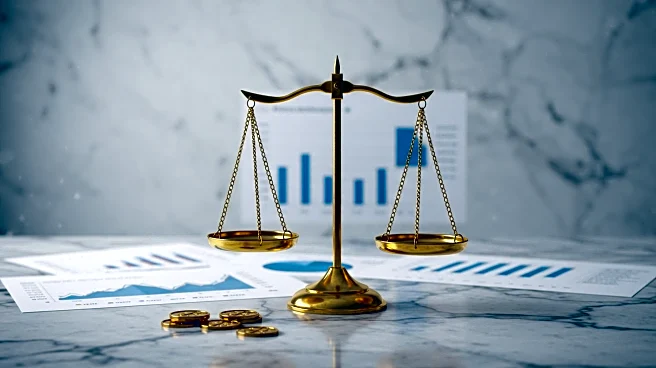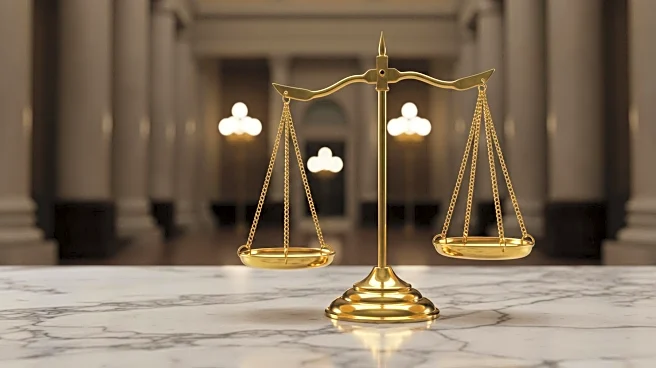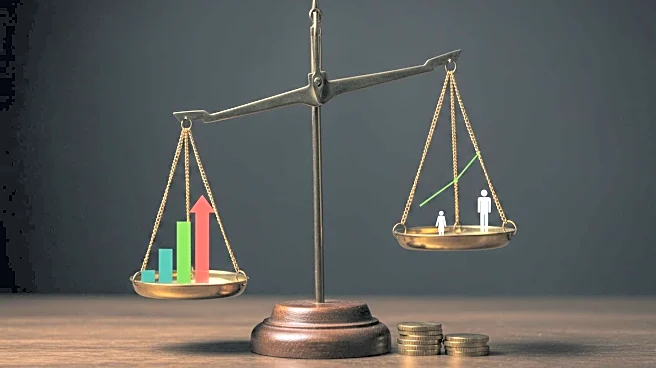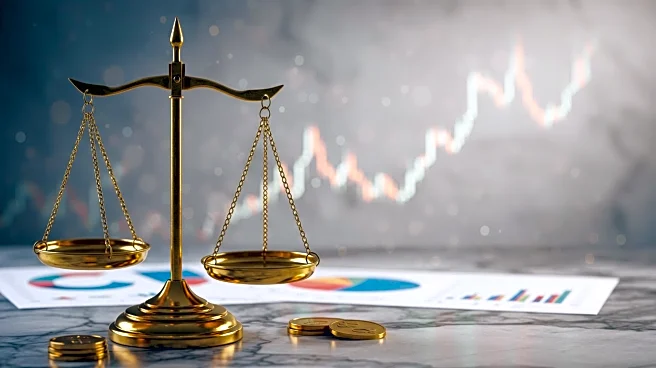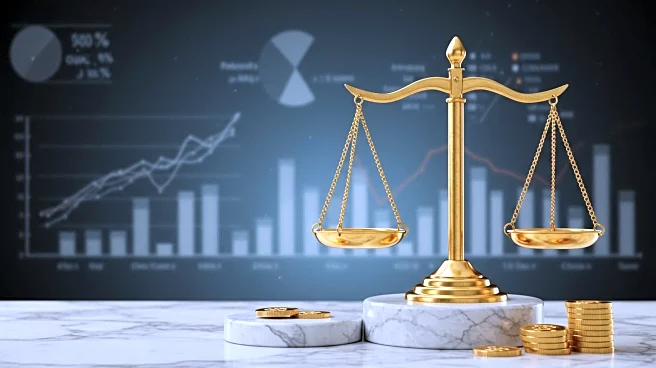What's Happening?
The Federal Reserve is signaling potential interest rate cuts in response to economic instability exacerbated by President Trump's trade policies. Fed Chair Jerome Powell, speaking at the Jackson Hole symposium, indicated that while short-term rate cuts might occur, long-term rates could remain higher than pre-pandemic levels. This comes as the Fed attempts to balance inflation control with economic growth, amidst President Trump's push for lower rates to support the housing market. The Fed's previous rate hikes aimed to curb inflation, but Trump's trade war has introduced new economic challenges, including increased tariffs and potential price hikes.
Why It's Important?
The Fed's decision to potentially cut interest rates is crucial for the U.S. economy, impacting borrowing costs for consumers and businesses. Lower rates could stimulate economic activity but also risk higher inflation. The ongoing trade tensions and tariffs introduced by President Trump have complicated the Fed's efforts to stabilize the economy, potentially affecting global trade relationships and domestic economic conditions. The situation highlights the delicate balance the Fed must maintain between fostering economic growth and controlling inflation, with significant implications for the housing market and broader economic stability.
What's Next?
The Federal Reserve is expected to closely monitor economic indicators, including inflation and employment rates, to determine the timing and extent of any rate cuts. The impact of President Trump's trade policies will also be a key factor in the Fed's decision-making process. Stakeholders, including businesses and consumers, will be watching closely for any changes in monetary policy that could affect economic conditions and financial markets.
Beyond the Headlines
The Fed's actions underscore the complex interplay between monetary policy and executive decisions, such as trade policies. The situation raises questions about the limits of monetary policy in addressing structural economic changes and the potential long-term effects of trade tensions on the U.S. economy. The Fed's cautious approach reflects the challenges of navigating economic uncertainty in a politically charged environment.
